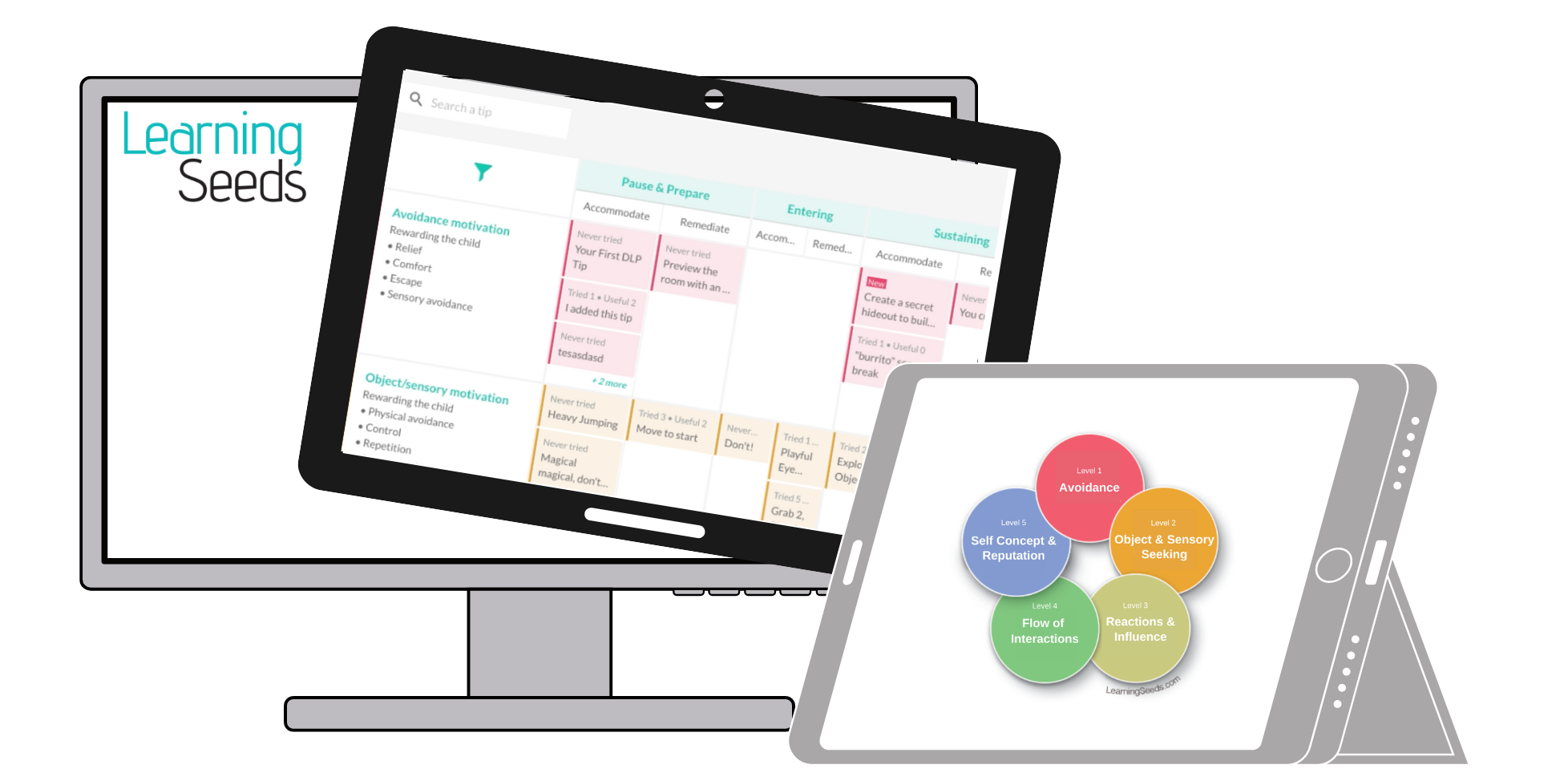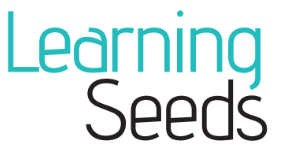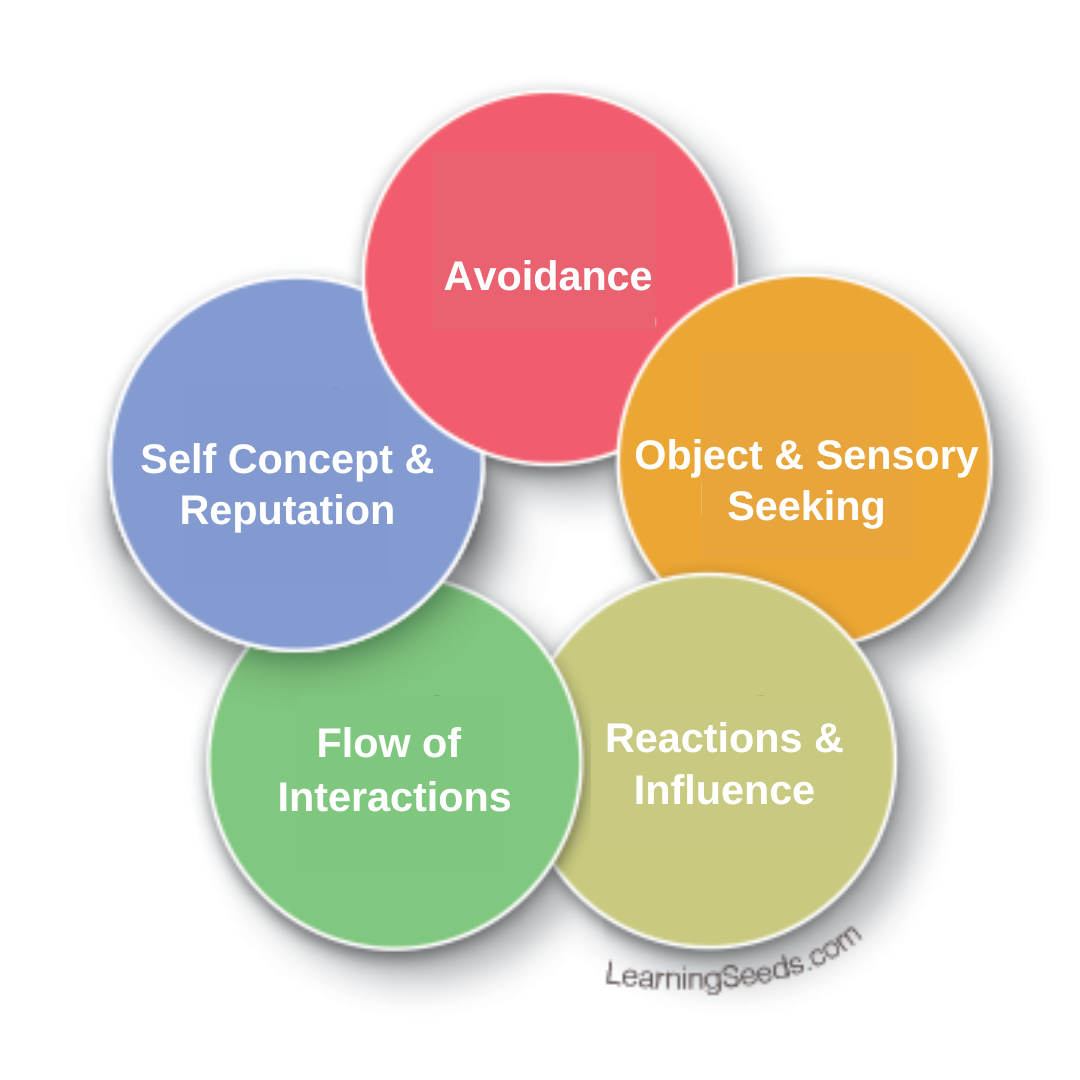
We Start with Motivation
At Foundation of Our Motivation Framework: What Is the Child’s Motivation?
Why Is Motivation Important?
Children’s challenging behavior has a purpose. When we respond to the purpose, we can help them change their behavior.
When children are given incentives and rewards to behave in a certain way, they learn to expect incentives (“payment”) in exchange for behaving in the way you want them to behave. But, when we help children discover motivation, they learn to seek out the play skills that they need to practice in order to receive the social rewards they want!
Increasing Opportunities to Practice Social Skills
Children who need the most social practice get the least because their behavior leads to exclusion. If you pinch your classmates, they won’t want to sit next to you!
Learning Seeds finds opportunities for children to get more social practice than their behavior would otherwise elicit by looking for what the child wants to do. We then clear obstacles from their path to give them a chance to play and interact with their peers. As they experience positive social interactions, they receive the social rewards that come with positive social experiences.
Guidance from Our Motivation Framework
Our work starts with observing what is motivating a child. Depending on the motivation, our framework guides us towards techniques that match the child's motivations. Our Enlightened Shadows respond and nurture glimmers of children’s social interest by exploring techniques from our framework’s five levels of motivation. The Tips in the Grid are classified and organized according to this framework, too.
Levels of Motivation
Think about a time when you’ve seen a child being disruptive or withdrawn. Was the child seeking avoidance? When a child’s motivation is avoidance, they are seeking relief, comfort, escape, and sensory avoidance. The Grid includes 100’s of Tips (strategies) to help educators tap in to a child’s motivation (e.g., avoidance) to set the child up to practice skills that move them towards more advanced levels, social rewards, and expanded skills.
LEVEL: Avoidance
In this level, a child’s motivation is Avoidance. They find rewards in:
• Relief
• Comfort
• Escape
• Sensory avoidance
LEVEL: Object & Sensory
In this level, child’s motivation is Object & Sensory-related. They find rewards in:
• Collecting of objects
• Repetitive or rote play
• Sensory seeking
LEVEL: Reactions & Influence
In this level, a child’s motivation is Reactions & Influence. They find rewards in:
• Having an audience
• Social reaction
• Flickers of connection
• Attention
• Social power
LEVEL: Flow of Interactions
In this level, a child’s motivation is Flow of Interactions. They find rewards in:
• Interactive play
LEVEL: Self Concept & Reputation
In this level, a child’s motivation is Self Concept & Reputation. They find rewards in:
• Continuity
• Relationships
• A sense of belonging
• Self improvement




